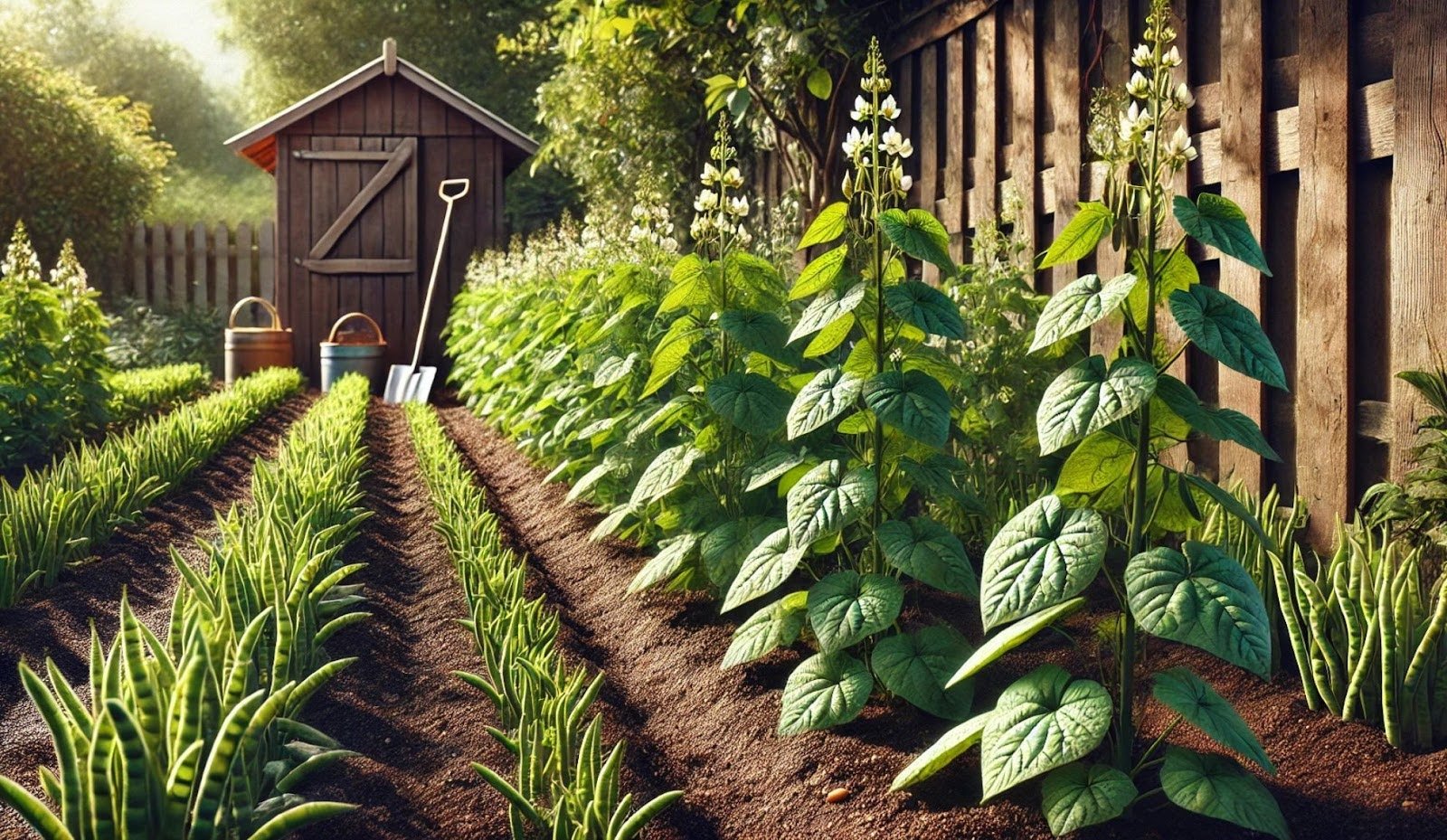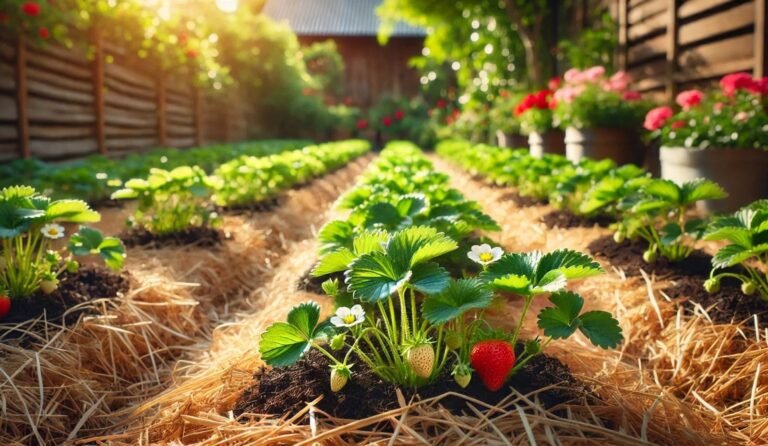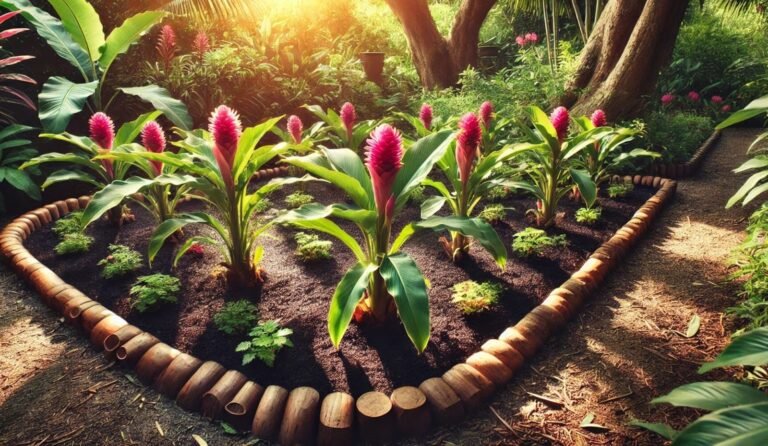Planting Navy Beans: A Beginner’s Guide to a Bountiful Harvest
Planting navy beans is easier than you think, and the rewards are totally worth it. Imagine harvesting your own fresh, protein-packed beans right from your backyard or even indoors! These little powerhouses don’t need much—just the right soil, plenty of sun, and a bit of patience.
Whether you’re a beginner or a seasoned gardener, growing navy beans is a fun, low-maintenance way to boost your garden’s bounty. Plus, they naturally enrich the soil, making your garden even better for future crops. Ready to get started? Let’s dig in!
Understanding the Navy Bean Plant
Navy beans (Phaseolus vulgaris), also known as haricot beans, pearl haricot beans, or white pea beans, are part of the common bean family. It’s rather obvious, but I’m going to mention it anyway – navy beans are not navy in color. In fact, they are small white beans.
Why call them navy beans? Navy beans were named as such because they were a staple food in the United States Navy during the early 20th century. These beans are known for their mild flavor and creamy texture, making them ideal for soups, stews, and baked dishes.
Navy bean plants are annuals, meaning they complete their entire life cycle in a single growing season. They typically grow in bush form, reaching about 1 to 2 feet in height, though some varieties can be pole types that require support. The plants produce small, delicate white flowers before forming pods, which contain the beans.
One of the best things about navy beans is their adaptability. They can be grown outdoors in garden beds, raised beds, or containers. If you live in an area with a short growing season or lack outdoor space, you can even grow them indoors with the right setup.
Choosing the Right Location for Planting Navy Beans
Before planting navy beans, you need to determine the best location for them to thrive. These beans love warm weather and plenty of sunlight, so choosing the right spot is crucial.
For outdoor planting, find a place in your garden that gets at least 6 to 8 hours of direct sunlight daily. Navy beans do best in well-draining, loose, fertile soil with a pH between 6.0 and 7.0. Avoid areas where water tends to collect, as overly wet soil can lead to root rot.
If you’re growing navy beans indoors, position them near a south-facing window where they can receive ample light. If natural sunlight is insufficient, consider using grow lights to supplement. A minimum of 10–12 hours of light per day is ideal for strong, healthy plants.
Time of Sowing
When to Plant Navy Beans for Best Results
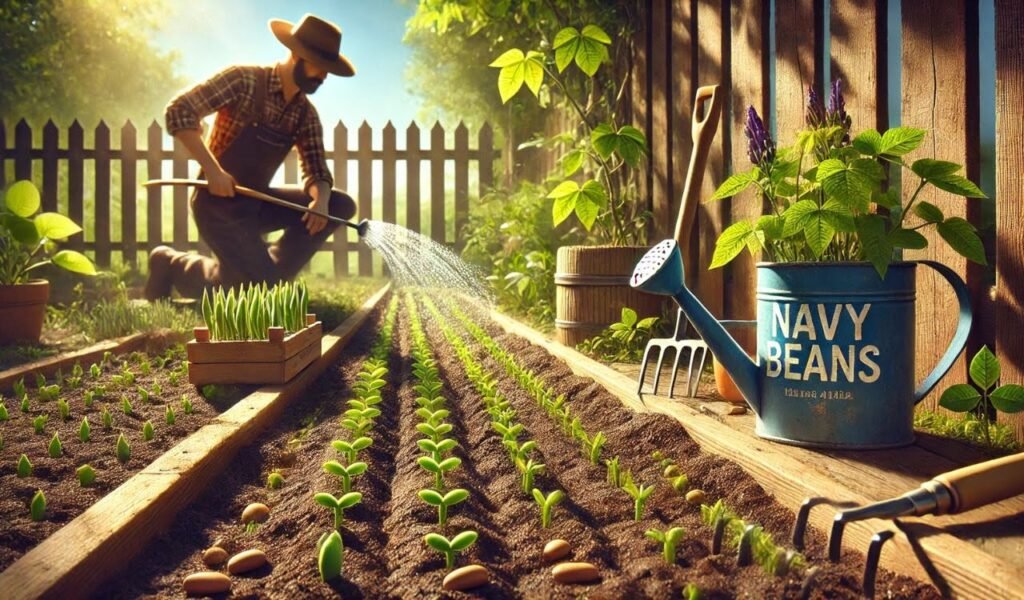
Timing is everything when it comes to planting navy beans. These warm-season legumes thrive in temperatures above 60°F (16°C) and do not tolerate frost well. If you plant them too early while the soil is still cold, the seeds may rot instead of germinating.
For outdoor planting, the best time to sow navy beans is after the last frost date in your area. In most regions, this means planting them in late spring to early summer, typically between April and June. If you live in a colder climate with a shorter growing season, consider starting your beans indoors and transplanting them once the weather warms up.
Growing Navy Beans in Different Climates
Temperate Climates: Sow navy beans in late spring when nighttime temperatures stay above 50°F (10°C).
Tropical Climates: You can plant navy beans almost year-round, avoiding only the peak rainy season.
Colder Regions: Start seeds indoors 2–3 weeks before the last frost and transplant once it’s warm enough outside.
Soil Temperature Matters
Navy beans germinate best when the soil temperature is between 60–75°F (16–24°C). If you’re unsure whether your soil is warm enough, you can use a soil thermometer to check before planting. Warmer soil leads to faster germination, stronger seedlings, and a better overall yield.
By planting at the right time, you ensure your navy beans have a full 70–100 days of warm weather to grow and produce a bountiful harvest.
Preparing for Planting Navy Beans
Choosing the Best Navy Bean Seeds
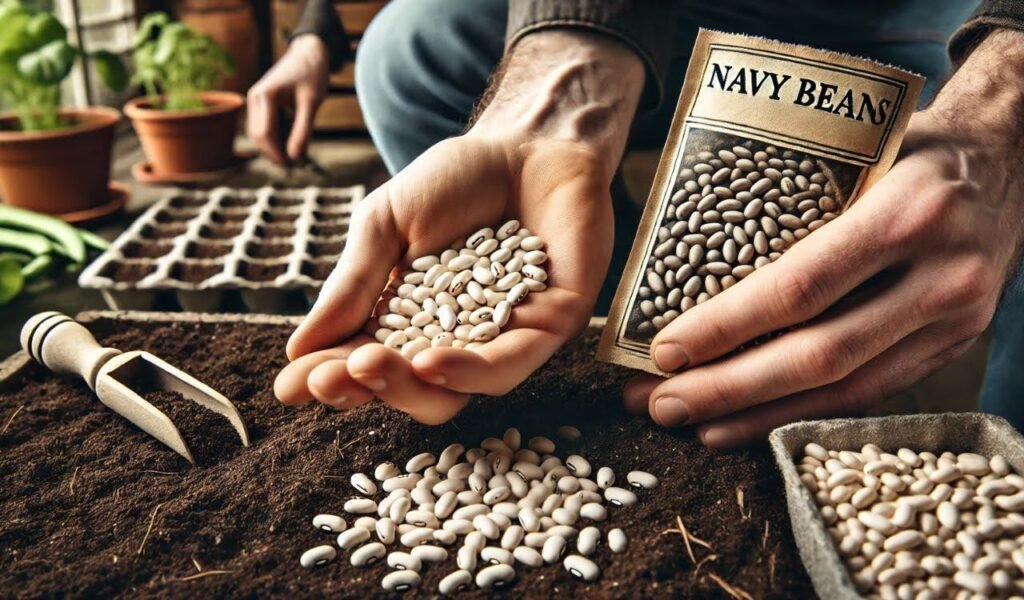
Selecting quality navy bean seeds is the first step to success. Purchase seeds from a reputable supplier or use dried beans from an organic grocery store. If you’re using store-bought beans, do a germination test by placing a few seeds between damp paper towels to see if they sprout before planting.
Soil Preparation
Good soil preparation ensures that your beans will grow strong and healthy. Loosen the soil to about 6–8 inches deep, removing any rocks, weeds, or debris. Mix in organic compost or well-rotted manure to boost soil fertility. Since beans fix their own nitrogen, they don’t require heavy fertilization, but a balanced organic fertilizer can help if your soil is poor.
If planting in containers, choose pots that are at least 12 inches deep with drainage holes. Use a light, well-draining potting mix instead of heavy garden soil.
Spacing Requirements
Proper spacing ensures good airflow and prevents fungal diseases.
- Bush varieties should be spaced 4–6 inches apart in rows that are 18–24 inches apart.
- Pole varieties need about 6–8 inches between plants and support from stakes, trellises, or poles.
Step-by-Step Guide: Planting Navy Beans
Outdoor Planting
Navy beans should be planted after the last frost when soil temperatures reach 60°F (16°C) or higher. Cold soil can delay germination and lead to poor growth.
- Sow the seeds directly into the soil about 1–1.5 inches deep.
- Water gently but thoroughly, ensuring the soil remains moist but not soggy.
- Mulch around the plants with straw or grass clippings to retain moisture and prevent weeds.
- Thin seedlings if necessary, keeping the strongest ones to maintain proper spacing.
Indoor Planting
If growing navy beans indoors, follow these steps:
- Fill your container with a well-draining potting mix and moisten it slightly before planting.
- Plant the seeds 1 inch deep and gently cover with soil.
- Place the pot in a sunny location or under grow lights.
- Keep the soil moist but avoid overwatering, as excess moisture can cause root rot.
Caring for Your Navy Bean Plants
Watering Schedule
Navy beans need consistent moisture, especially during germination and pod formation. Water deeply once or twice a week, depending on rainfall. Avoid overhead watering to prevent fungal diseases. Instead, use a drip irrigation system or water at the base of the plants.
Fertilizing Needs
Since navy beans are nitrogen-fixing plants, they don’t need heavy fertilization. However, adding a small amount of phosphorus-rich fertilizer (like bone meal) can promote better pod development. Avoid high-nitrogen fertilizers, as they encourage excessive leafy growth at the expense of beans.
Providing Support
Bush varieties typically don’t need support, but if you’re growing pole navy beans, use stakes or a trellis to keep them off the ground. This not only improves airflow but also makes harvesting easier.
Managing Pests and Diseases
Navy beans are generally hardy, but like all plants, they can be affected by pests and diseases.
Common Pests
Aphids – Small sap-sucking insects that weaken plants. Use neem oil or introduce ladybugs for control.
Bean beetles – These pests chew on leaves and pods. Handpick them or use organic insecticidal soap.
Cutworms – These larvae cut seedlings at the base. Placing collars around young plants can help.
Diseases and Prevention
Powdery mildew – A white fungal growth on leaves. Prevent by ensuring good airflow and avoiding overhead watering.
Root rot – Caused by overly wet soil. Ensure proper drainage and avoid overwatering.
Harvesting Navy Beans
Navy beans are ready for harvest 70–100 days after planting. The best time to harvest depends on whether you want fresh or dried beans.
- For fresh beans, pick pods when they are plump but still tender.
- For dried beans, wait until the pods turn yellow and dry out completely on the plant. Once fully dry, remove the pods and shell the beans.
After harvesting, store dried beans in an airtight container in a cool, dry place. Properly stored, they can last for up to a year.
Troubleshooting Common Growing Issues
If your navy bean plants are struggling, here are some common issues and solutions:
Yellowing leaves? Likely overwatering or nutrient deficiency. Adjust watering and add compost.
Slow growth? Soil may be too cold or lacking nutrients. Ensure proper soil temperature and consider adding phosphorus.
Few pods forming? Could be due to excessive nitrogen. Avoid high-nitrogen fertilizers and ensure the plants get enough sunlight.
FAQ
When is the best time for planting navy beans?
Plant navy beans after the last frost when soil temperatures reach at least 60°F (16°C).
Can I grow navy beans indoors?
Yes! Use deep containers, well-draining soil, and ensure they get at least 10–12 hours of light daily.
How long do navy beans take to grow?
Navy beans typically take 70–100 days to mature, depending on growing conditions.
Do navy beans need support to grow?
Bush varieties don’t, but pole varieties need a trellis or stakes for support.
How often should I water navy bean plants?
Water deeply once or twice a week, keeping the soil moist but not soggy.
What pests attack navy beans?
Common pests include aphids, bean beetles, and cutworms. Neem oil or companion planting can help.
Conclusion
Planting navy beans is a rewarding and straightforward process, whether in your backyard or indoors. With the right soil, sunlight, and care, you’ll enjoy a bountiful harvest of delicious, homegrown beans. Navy beans are not just easy to grow but also an excellent addition to any healthy diet.
So why not start your navy bean garden today? Now that you know everything about growing navy beans, it’s time to grab some seeds, get your hands in the soil, and enjoy the journey of cultivating your own beans at home!

